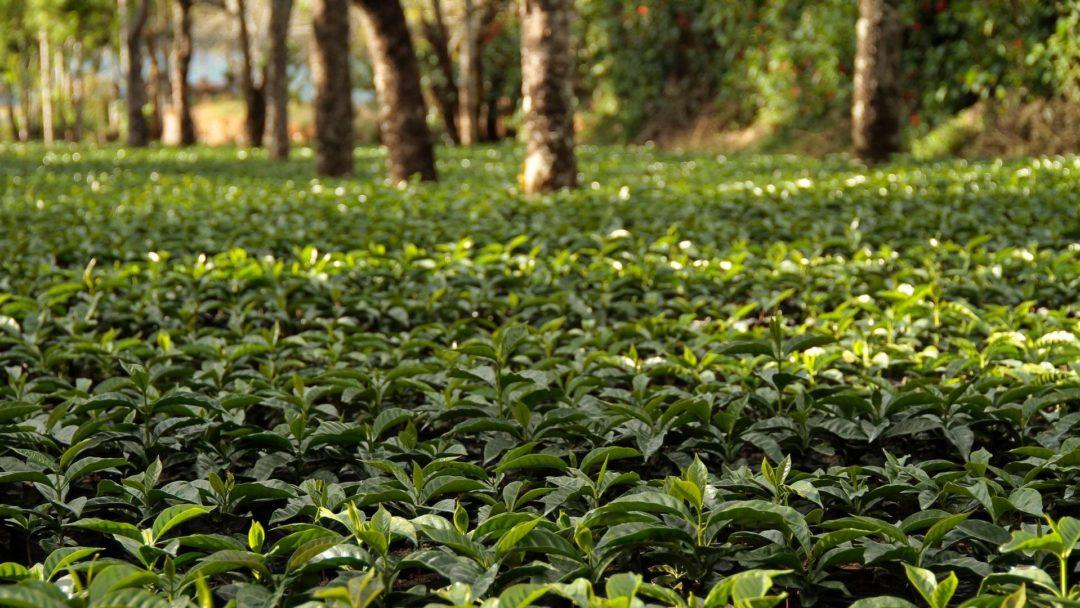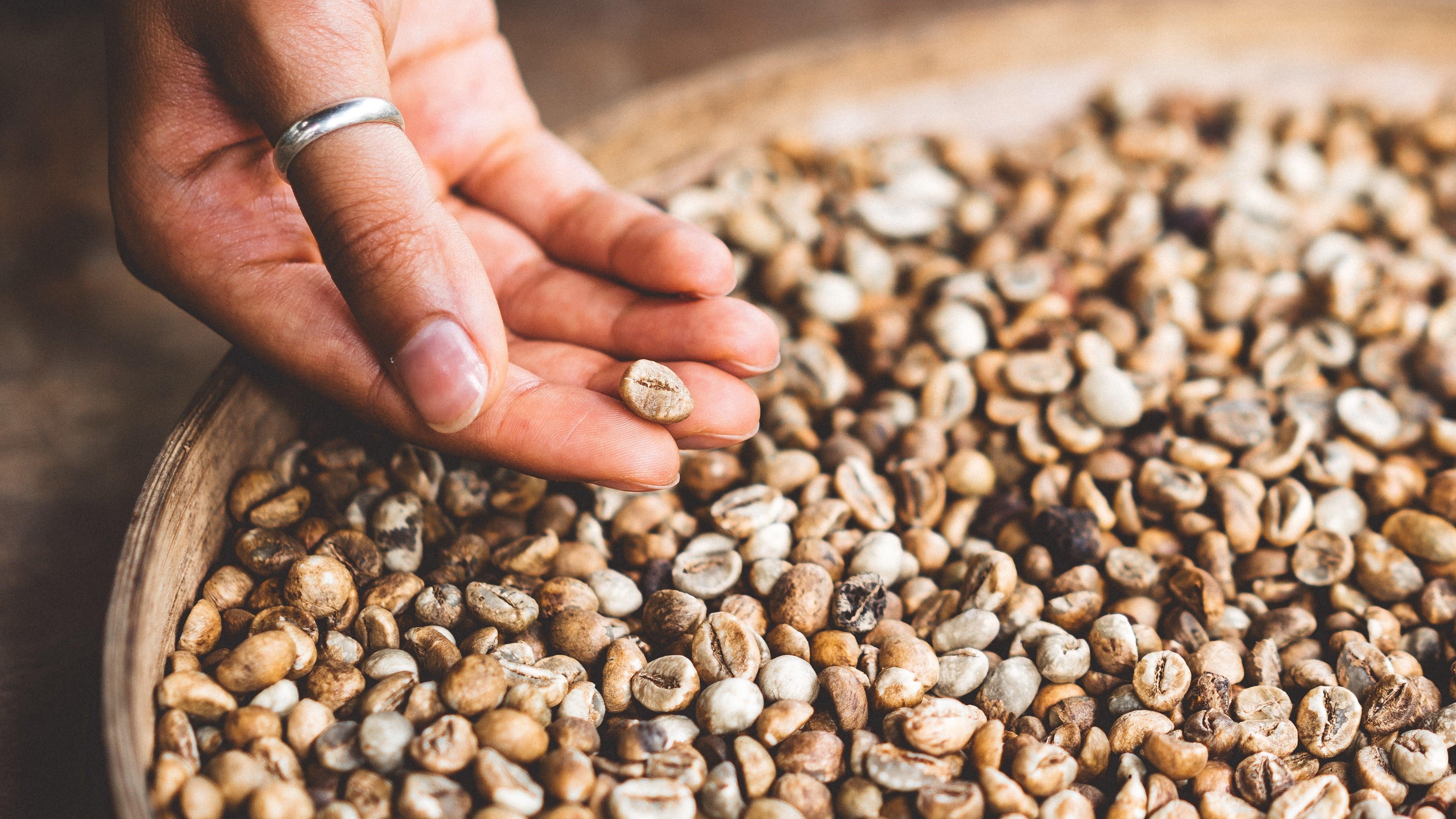
Flavors & Aromas From All Around the World
From Seed to Bean #1: Planting & Harvesting
There is a tremendous amount of love and labor that goes into the coffee beans that we enjoy on the daily.
It is easy to take the joys and wonders of coffee for granted, so we want to highlight the planting and harvesting process and the different flavors and qualities of coffee you can find around the world.
Let’s take a look.
1. PLANTING
Coffee beans are seeds from coffee trees. When these seeds are dried, roasted, and ground, they may be used to brew coffee. If left unprocessed, these seeds can be planted and grown into coffee trees.
Today, coffee seeds are planted in large beds, and sometimes in shaded nurseries. They require plenty of watering and shade until they are strong enough to stay permanently rooted.
Planting generally takes place during the wet season, so soil remains moist while roots grow firmly entrenched in the soil. Factors such as plant variety, soil chemistry, weather, amount of rain and sunshine, and even the altitude of where the coffee is grown, and how these seeds are harvested all greatly influence the taste of the final product.
Different combinations of these factors give us the wide, rich, and complex scope of flavors found in different regions all around the world.
Even from one plantation, one can find significant differences in quality in taste. Below is a list of flavors and notes which uniquely marks different regions around the world:
North America & The Caribbean
United States - Hawaii
There are a variety of coffee farms throughout the Hawaiian Islands, but Kona coffee from the Big Island of Hawaii is best known and in highest demand.
Young trees are planted in black, volcanic soil from the slopes of the active Mauna Loa volcano with afternoon shade provided by tropical clouds. This provides a natural canopy over the trees to protect them from the sun and frequent island showers. All of these factors lead to a “just right” balance of rain, sun, and soil, making Kona coffee known for its delicious, rich, aromatic cup and medium body.
Mexico
There are over 100,000 coffee farmers in Mexico, ranking it as one of the largest coffee producing countries in the world. Interestingly, smaller Mexican coffee farms are more common than the larger plantations.
Either way, most of these farms lie in the southern states of Veracruz, Oaxaca, and Chiapas, bordering them closer to the equatorial zone known as the “Bean Belt.” Generally, you can find a cup of Mexican coffee with wonderful aroma and depth of flavor, often with a notable sharpness.
It is an excellent bean for dark roasts, often used in blends. PS: A Mexican coffee noted as Altura means that it was grown at high altitudes.
Puerto Rico
Although Puerto Rico was the sixth leading exporter of coffee in the world, major hurricanes and competition from other coffee producing countries forced the island to other means of economic survival.
Fortunately, today the coffee industry is experiencing a revival with a cultivation of quality Arabica varieties produced to the highest standards.
Currently there are two major growing regions on the Carribean island: Grand Lares in the South Central and Yauco Selecto in the Southwest. In both regions, beans are noted for their balanced body and acidity and their fruity aroma.
Central America
Guatemala
Guatemalan coffee is known for its rich flavor. It is grown in three main regions: Antigua, Coban, and Huehuetanango, all rich with volcanic soil. These beans are often grown at altitudes 4500 feet / 1370 meters or higher. Their flavors range from medium to full bodied, with a depth and complexity that is almost spicy or chocolatey.
Costa Rica
There are only wet-processed Arabicas produced in Costa Rica. They are known for their medium body and sharp acidity, often described as the “perfect balance” of so.
These beans are often grown in small farms, known as fincas. After harvest, cherries are immediately taken to state-of-the-art facilities, beneficios, where wet method processing begins.
The tremendous amount of attention to quality processing and environmentally friendly growing methods have built a fine reputation for Costa Rica’s coffee.
South America
Colombia
Colombia ranks second in worldwide coffee production. As one of the world’s best known coffee producers, there is a high standard of excellence and quality maintained through thousands of small family farms around the country.
Their excellent commitment to care and attention results in consistently good mild coffees with well balanced acidity. Although the rugged Colombian landscape provides the perfect environment for growth, the terrain often makes transporting these beans an issue. Even to this day, transportation is done mostly by mule or Jeep.
Colombian Supremo, the highest grade, has a delicate, aromatic sweetness, while Excelso Grade is softer and slightly more acidic.
Brazil
As the biggest coffee producer in the world, coffee plantations in Brazil cover seemingly endless amounts of land, requiring hundreds of people to manage and operate.
Both Arabica and Robusta are grown. A fine cup of Brazillian is clear, sweet, medium bodied, and low in acidity.
East Africa
Ethiopia
With coffee legend citing the origin of coffee in Ethiopia, wild coffee trees are still known as the primary harvesting source. Coffee in Ethiopia comes from three regions: Sidamor, Harrar, and Kaffa, and they are generally wet processed. Ethiopian coffee is known for its remarkable and bold flavor - full flavored, down to earth, and full bodied.
Kenya
Kenyan coffee is well-liked and well known in the US and Europe. It’s known for its sharp, fruity acidity, combined with full body and a rich fragrance.
Kenyan coffee is grown on the foothills of Mount Kenya often by small farmers. There is a high standard on quality, which has led to its own grading system: Kenyan AA is the largest bean size in a 10-size grading system, and AA+ means that it was estate grown.
West Africa
Ivory Coast
The Ivory Coast is one of the largest worldwide producers of Robusta coffee, known for its strongly aromatic character with a light body and acidity.
This coffee is suited best for a darker roast, and often used in espresso blends.
The Arabian Peninsula
Yemen
Yemen is where coffee was first commercially cultivated. Here coffee is still grown in its traditional manner. There is a lack of water, which leads to its distinctive rich and deep taste.
It is from the famous Yemeni port of Mocha, that the word became synonymous with Arabian coffee all around the world. From there, the Dutch combined Arabian coffee with coffee grown in the islands of Java to make the world’s first coffee blend, still famous today - Mocha Java.
Asia
Indonesia
Indonesia, one of the world’s largest countries, is composed of thousands of islands. Some of its larger islands, Sumatra, Java, and Sulawesi, are known worldwide for their quality coffee.
The plant itself was introduced to Indonesia by Dutch colonists in the 17th century.
Indonesian coffee is noted for its pronounced, rich, full body and mild acidity. Moreso, Indonesia is also known for its fine aged coffee, which started as a way for farmers to sell it at higher prices by holding it over a period of time.
Warehousing in Indonesia’s warm and damp climate produces coffee prized for its deeper body and lower acidity, a process that cannot be matched even with today’s technology.
Vietnam
The French introduced coffee to Vietnam in 1857. It has since become one of the world’s largest coffee producers.
Currently, small plantations are spread in the southern half of the country, producing mostly Robusta coffee known for its light acidity, mild body, and good balance, frequently used in blending.
2. HARVESTING
This fruit, called the coffee cherry, turns a bright, deep red when it’s ripe and ready for harvest. Typically, there is one large harvest a year. In most countries, the crop is picked by hand in a labor-intensive and difficult process.
Although, there are some places like Brazil, where the land is generally flat and the coffee great, that the process has been mechanized.
Whether by hand or machine, all coffee is harvested in one of two ways:
Strip Picking
All the cherries are stripped off the branch at once, either by machine or hand.
Selective Picking
Only ripe cherries are harvested, picked one by one by hand. Pickers often rotate among trees every 8-10 days, choosing only cherries at peak ripeness. This process is much more labor intensive and costly, and used primarily to harvest the finer Arabica beans.
In general, one can expect about 100 to 200 pounds of coffee cherries a day from a good picker - which averages about 20-40 pounds of coffee beans. Each picker’s daily haul is carefully weighed, and they are paid on the quality and volume of his or her work. After everything has been weighted, the day’s harvest is then transported to the processing plant...
A process which we will further discuss in the next blog post. Until then, thank you for stopping by and we hope you received something noteworthy that will help you appreciate and celebrate your daily cup of coffee for the better.
There is always plenty of joy in these little moments and cups we share.
Cheers,
Ovalware
References:
http://www.ncausa.org/about-coffee/10-steps-from-seed-to-cup
http://www.ncausa.org/about-coffee/coffee-around-the-world
https://www.pinterest.co.uk/amp/pin/351210470910416703/
https://www.usaid.gov/sites/default/files/Better_Coffee_Harvest_0.jpg
https://arbordayblog.org/coffee/visiting-coffee-farm-santa-rosa-guatemala/



Leave a comment
This site is protected by hCaptcha and the hCaptcha Privacy Policy and Terms of Service apply.